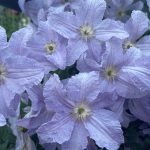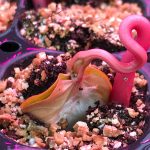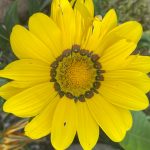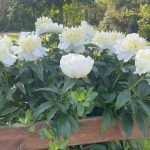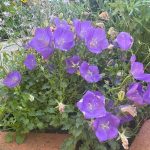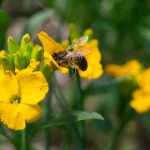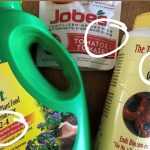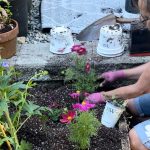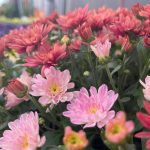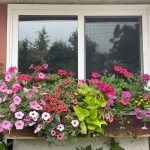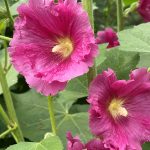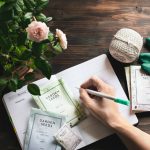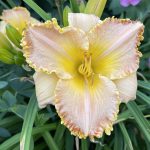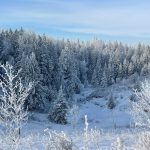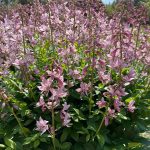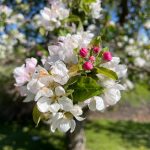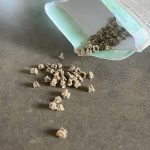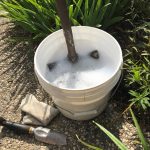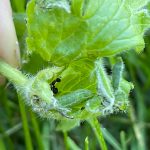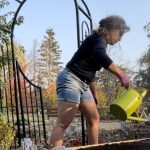Pollinators, and how to attract and care for them, are hot gardening topics today. Huddle in with me and let’s talk about what is a pollinator, the best ways to attract pollinators, and some of the best pollinator appealing annuals and perennials.

What is a pollinator?
The simple definition of a pollinator is anything that moves pollen from a flower’s male anther to the female stigma. Pollinators are often associated with living things like insects and birds, but they can also be nonliving, such as the wind or rain.
Pollinators play a critical role in our world. According to the Honey Council of Canada, about 30% of the food we eat are the direct result of pollinators, mostly done by bees. Over the past decade, some pollinators, like bees, have had a difficult time thriving, as seen in declining natural bee populations.
We can do our part for pollinators and the environment by planting and growing a garden that encourages pollinators of all kinds.
Living Pollinators
Pollinators from every category of the living world play a role in pollination. Flower pollination is really an accidental process because living pollinators are attracted to the nectar produced by nectaries deep within the flower. As pollinators dive into a flower to feed on nectar, they end up swishing pollen around inside the flower.
Speaking specifically of bees, they harvest pollen and carry it in ‘corbicula’, a kind of pollen basket, on their hind legs for feeding the baby bees in their hives. Bees can carry up to 35% of their body weight in pollen.
Let’s look at the different groups of living pollinators one by one:

Mammals
Small mammals like bats, mice and other small rodents pollinate plants as they fly and scurry around to find food. Just by brushing past a flower ripe with pollen can cause pollination.
Reptiles
Frogs and salamanders play a role in pollination as they rustle by plants when they move around. In the tropical world, wall lizards and geckos are pollinators, too.
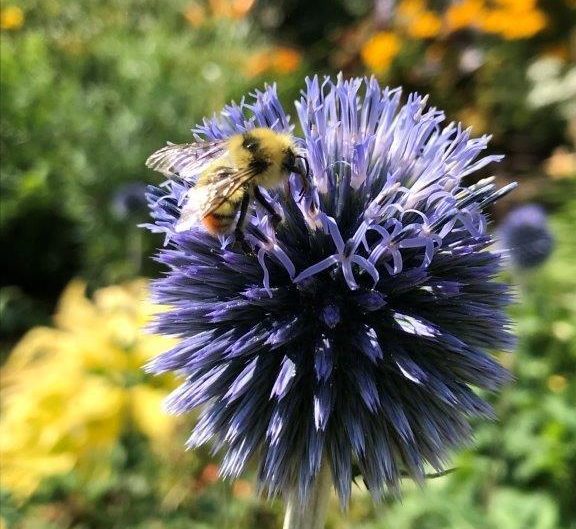
Birds
Birds have a major role as pollinators as they land on small branches and cause pollen to shuffle around. Hummingbirds are the most famous nectar feeding bird.
Insects
This is the most abundant group of pollinators. A few examples are beetles, butterflies, flies, midges, ladybugs, wasps, and, of course, bees!
The Best Elements to Draw Pollinators into a Garden
A pollinator enticing garden incorporates a variety of components that dynamically interact with one another. Each element is helpful, and the more you can integrate, the more attractive it makes your garden. Let’s talk about them now.

1. Provide a Constant Supply of Flowers
Bees and other pollinators forage for food throughout the whole growing season, from spring right through to fall. Having a garden stocked with flowers in spring, summer, and fall allows them to have continual access to nectar and pollen. Speaking of perennials, most perennials have a season of bloom. Offer a smattering of spring, summer, fall, and continuously blooming perennials to your garden mix. In addition to perennials, annuals will bloom all season if they are deadheaded.
Here is a quick list of some wonderful and hardy (Zone 2-4) pollinator-attracting perennials in each season of bloom:
- Spring Blooming Perennials: Allium (Ornamental Onion), Anemone (Pasque Flower, Prairie Crocus), Baptisia (False Indigo), Iris, Hellebore (Lenten Rose), Phlox subulata (Creeping Phlox), Primula (Primrose), Trollius (Globe Flower)
- Summer Blooming Perennials: Alcea (Hollyhocks), Delphinium, Echinops (Globe Thistle), Eupatorium (Joe Pye Weed), Hemerocallis (Daylily), Heuchera (Coral Bells), Monarda (Bee Balm), Oriental Poppy
- Fall Blooming Perennials: Aster, Liatris (Gay Feather), Sedum (Stonecrop), Solidago (Goldenrod)
- Everblooming Perennials: Echinacea (Coneflower), Gaillardia (Blanket Flower), Heliopsis (False Sunflower), Salvia
- Bee Loving Annuals: Alyssum, Basil, Calendula, Cosmos, Lavender, Marigolds, Mint, Nasturtiums, Petunias, Rosemary, Salvia, Snapdragons, Sunflowers, Thyme, Zinnias

2. Provide Flowers with Bright & Vibrant Colours
When deciding on flowers for a pollinator garden, go bold or go home. Both bees and butterflies prefer bright colours like yellow, orange, purple, and red. Butterflies are attracted to bright colours because they are myopic…they are short sighted and bright flowers are easier to find.
3. Provide Flowers that are Easily Accessible for Pollinators
Pollinators appreciate a simplified life just like we do. Pollinators like open faced, uncomplicated flowers with single blossoms like daisy or trumpet shaped flowers. Rudbeckia, Daisies, and Asters have that open, simple shape. And flowers like hollyhocks, Datura, Petunias, and 4 O’Clocks have trumpet shaped flowers with direct access to nectar and pollen.
4. Provide a Variety of Fragrances
Different flower perfumes attract different pollinators, so the more you can incorporate, the better it is for them. Sweet scents, like those of a dianthus, attract bees and flies. Fruity, spicy, and musty scents attract beetles. Flowers that bloom at night are particularly fragrant so that they can attract nocturnal flying insects like moths, and why not have a garden that is active 24-7? A couple of examples of night blooming flowers are Evening Scented Stocks (the most heavenly scent of all) and Moon Flowers.
Some favourite fragrant flowers are: Lily of the Valley, Honeysuckle, Bee Balm, Dictamnus (Gas Plant), Geraniums, Lavender, Lilies, Nicotiana, Peonies, Garden Phlox, Sweet Peas, and Stocks.
5. Provide a Source of Water
A water source is an important element to rounding out your pollinator garden’s appeal to pollinators. All pollinators appreciate a well-deserved drink of water and a water source brings all of the other elements together for a complete pollinator haven. Ideas for water sources are: bird baths, ponds, water fountains, open dishes, and even rain barrels.

6. Provide a Pesticide and Herbicide Free Landscape
Maintaining a pesticide-free and herbicide-free gardening space for pollinators is obvious to all gardeners, but not everyone knows that products labelled “organic” or “safe” aren’t safe for all stages of pollinator growth and development. Some pesticides that are considered to be safe for specific insects, like a bee-friendly or a ladybug-safe product, still often negatively affect the young developing insects. There are many people on the internet who have developed ‘pest-tea’ recipes, check out the ones that may work best for your yard.
A Garden that’s All the Buzz
Having a perennial garden reverberating with pollinators is not only great for our environment and a wonderful way for us to be good stewards of it, it’s also a fairly easy thing to do.
A clean, safe landscape constantly bursting with brightly coloured blossoms and clean water will go a long way to creating a garden that hums all season long!
© Sharon Wallish Murphy, ©Gardening with Sharon


